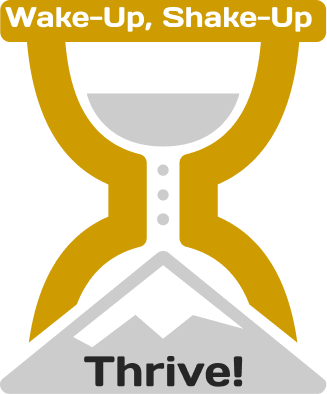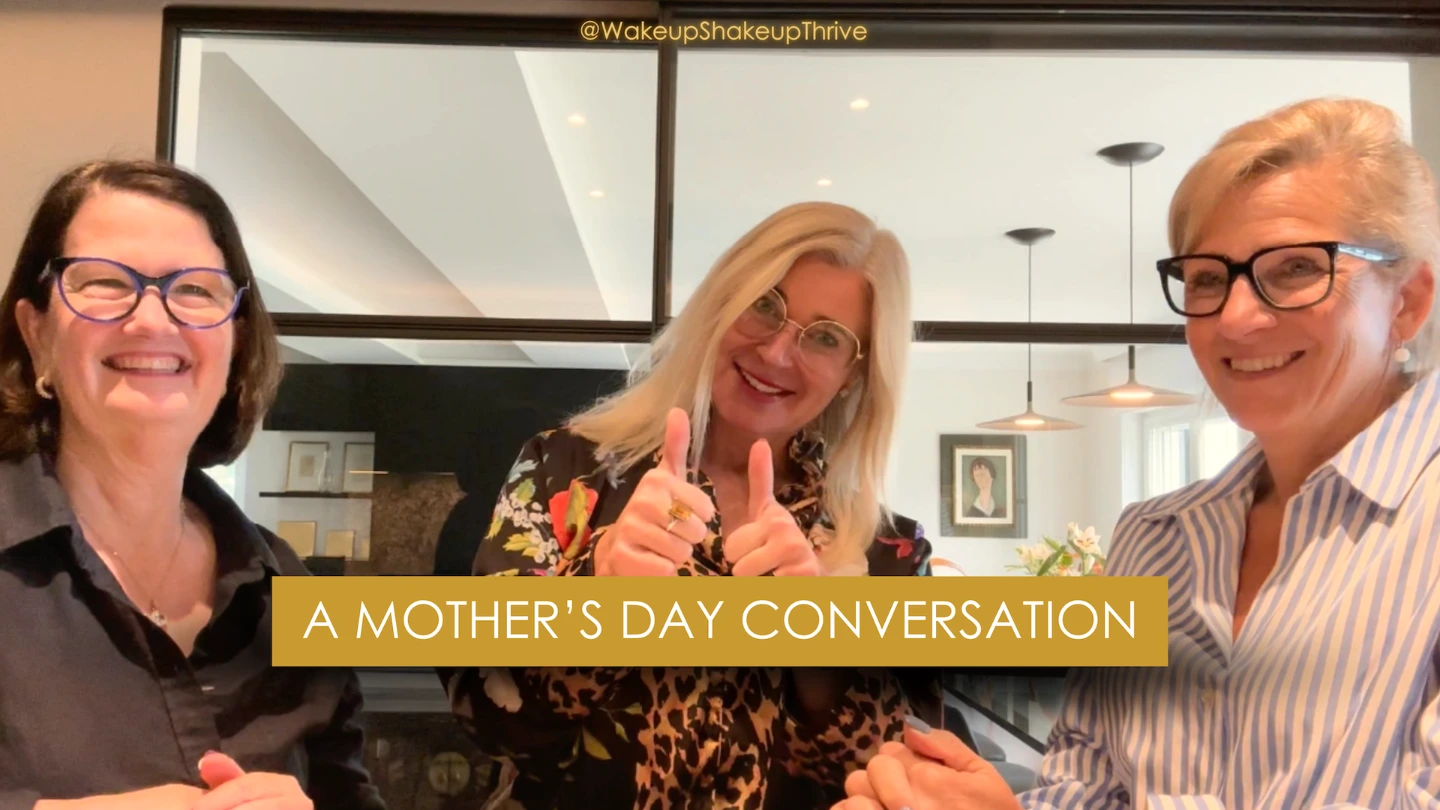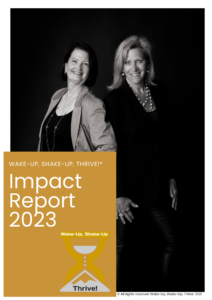
The lives of working mothers over 50 have shifted from juggling toddlers and school-aged children to managing young adults while caring for aging parents and often a challenging career..
Women of this age, as one of our interviewees Christiane mentioned, have a hockey stick career. Beginning at the end of the blade of the hockey stick, they tinker, in the blade years they commit themselves to learning more and becoming more experienced, then there’s a growth inflection point where they are recognized for their skills and finally the end of the hockey stick where they’re the ones in control. At age 50+ women (finally) have the wisdom, resilience, and the hunger to go full speed ahead.
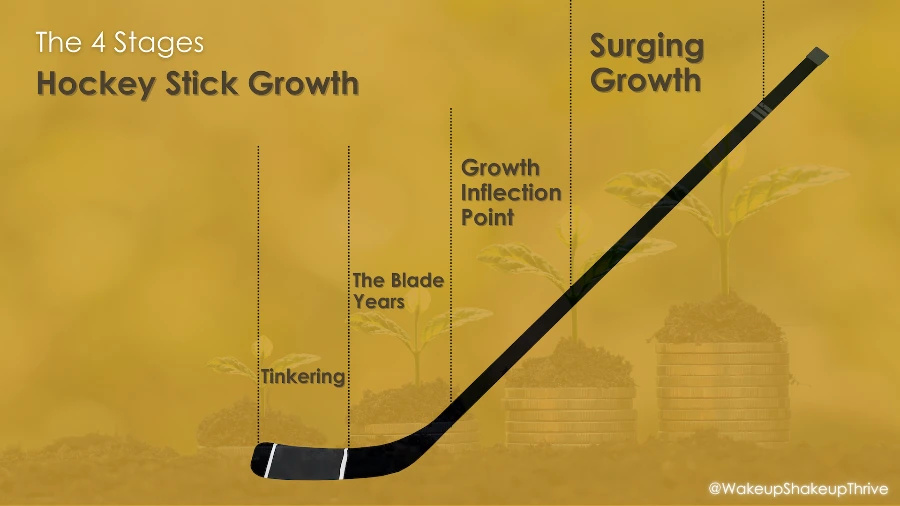
In this month’s blog,to honor Mother’s Day, we explore how working moms ages 50+ are both striving and thriving as we highlight challenges they are facing, as well as suggest ways in which employers can do even more to set them up for success. We’ve included snippets with inspiring mothers over 50 who shared the Wake Up, Shake Up moments of their lives with us – and now with you.
History of Mother’s Day
In 1905, American Anna Jarvis began lobbying for Mother’s Day following the death of her mother, a peace activist. Six years later, Mother’s Day became a holiday observed in all 48 U.S. states. Fast forward to today, and Mother’s Day is celebrated in nearly 60 countries worldwide. Switzerland and the United States both observe Mother’s Day on the 2nd Sunday in May, often marking the day with flowers or brunch.
While honoring mothers on this one “official” day results in many breakfasts-in-bed and much pampering, we at Wake-Up, Shake-Up, Thrive! wish to take a deeper dive into the ways in which we can support and honor mothers – all year long.
So much of the emotional and cognitive labor of daily life is placed on women. In addition to traditional “work” in the workplace, let’s not ignore the reality of a mother’s unpaid work that might include shopping for the home, maintaining and cleaning it, planning activities, scheduling appointments, managing children, and taking care of immediate and extended family members.
In her interview, Christiane – a seasoned 30 year C-Suite Executive and mother of two – explored the idea of how you can only begin to thrive by applying the oxygen mask metaphor: You are of no help to anyone, unless you first meet your own needs. “Making sure I put my own oxygen mask on first is not because I’m egotistic, it’s because I can’t give unless I have some energy left in the tank,” says Christiane. We completely agree!
How Many 50+ Moms Are Currently Working?
In 2021, the U.S. labor participation rate for women 45-54 was 75%, 59% for women 55-64 and 22% for women 65-74 according to the Bureau of Labor Statistics. Comparable research in the Swiss Labour Force Survey for 2021 showed 82% of women were still working at the age of 57 and by age 63, 52% of women were still working.
So once their children grow-up, what changes?
Adult children no longer require the same supervision and level of care, but this does not necessarily mean that mothers ages 50+ have more flexibility and adaptability. Given today’s aging demographic, older women are also often faced with aging parents replacing child-care with elder-care.
50+ women also face hurdles at work, including ageism, sexism, underrepresentation in leadership, and often daunting menopause symptoms.
Sometimes the hurdles we cleared in our 20s 30’s and 40’s become insurmountable.
We had an incredible conversation with interviewee Fran – A Real Estate Property Manager and mother of two – who at age 45, had what she called a “workaholic addiction breakdown.” Fran took a personal inventory and blew the whistle on herself and realized that, although she had a vision for her life, she was serving everyone else but herself. Her health, career, and marriage suffered and only by unraveling addictive patterns and adopting new choices could she discover her gifts as an entrepreneur who coached others.
Ageism and Sexism for Women over 50+
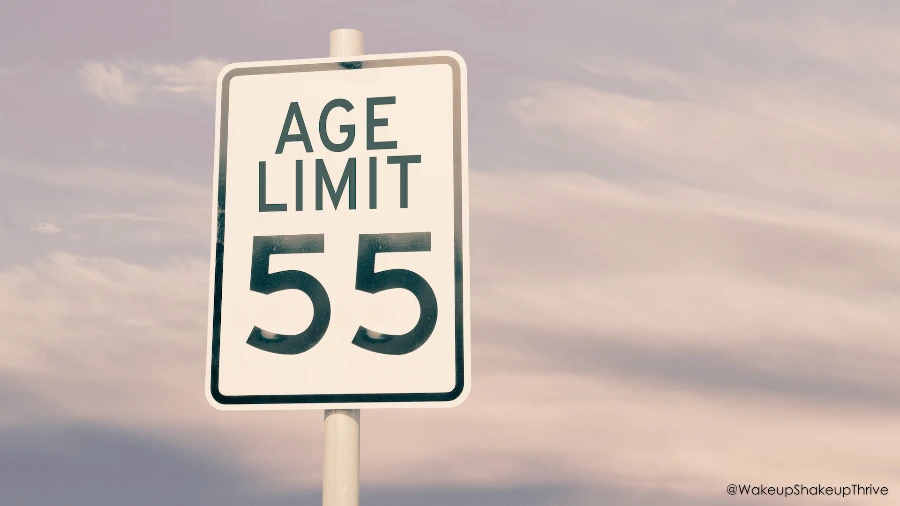
Many women feel they are either being pushed aside or pushed out. The thought of looking for another job and competing with people half their age can dissuade them from jumping back into the applicant pool. But if they need a flexible work schedule or want to take on more interesting work, they may decide to take the leap. One thing is for sure, the same old 9to5, approach to working isn’t working at all.
Women are demanding more from work, and following the recent COVID pandemic, they’re leaving their companies in unprecedented numbers to get it.
According to Leanin.org and Mckinsey and Co. ‘s 2022 survey, “Women in the Workplace,” reporting on responses from more than 40,000 employees – including in depth interviews: It’s not a great resignation. It’s a breakup.
Reasons women gave for leaving their positions included:
- Belittling microaggressions, i.e. having their judgment questioned or being mistaken for someone more junior.
- Spending time on employee support and well-being initiatives, spreading them thin and going mostly unrewarded.
It’s increasingly important for women leaders to work for companies that prioritize flexibility, employee well-being, and DEI.
What can employers do about Ageism and Sexism?
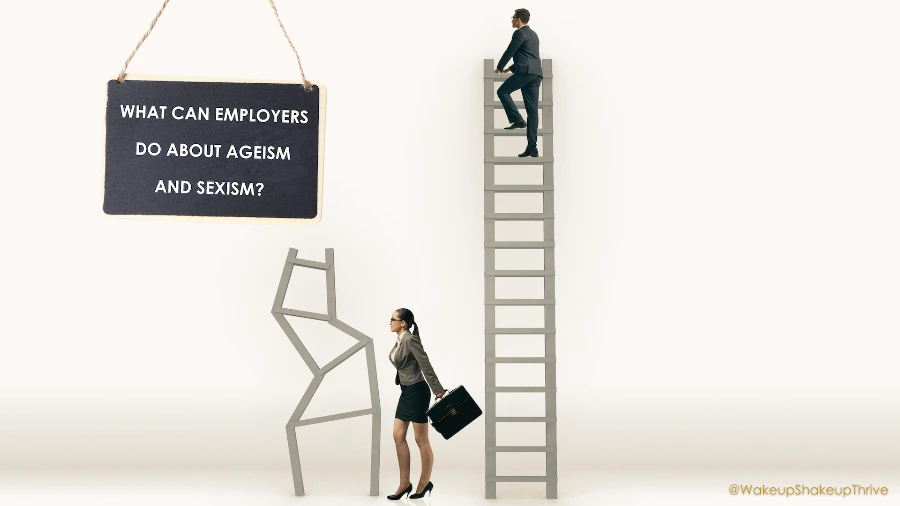
- Create an environment where microaggressions are not tolerated. This is another area where leadership must lead by example.
- Reward well done work, even when it is not revenue-generating. Look for ways in which the work completed contributes to the health, well-being, and vibrancy of your organization. For the benefits of doing so, see our recent blog post on prioritizing your aging workforce.
- Consider a wide range of options for workplace flexibility and employee well-being. If you require employees to be in the office two days a week, why not provide a longer lunch or provide lunch in the office?
- Reflect deeply: How are you actually walking the talk on employee well-being and Diversity, Equity, and Inclusion (DEI)?
Christiane shared a wealth of knowledge around flexibility, including allowing sabbaticals, job sharing, projecting work accurately, and employing consultants in addition to employees. These techniques help women over 50 contribute their knowledge and skills in a way that works better for all. According to Christiane, if employers continue to hire people between 25-35 because doing so is less expensive, they’ll be missing out on valuable and experienced employees over 50.
Women are STILL underrepresented in Leadership Roles
According to the McKinsey survey, for every 100 men who are promoted from entry-level roles to manager positions, only 87 women are promoted, and only 82 women of color are promoted. As a result, men significantly outnumber women at the manager level, and women can never or rarely catch up.
But women over 50 have significant skills to offer. When we spoke with Lisa Sicre, former executive and now business owner and mother of two, concerning entrepreneurship in your 50’s Lisa shared the importance of taking what you learned from your previous work experience into the next phase of work – a point of leverage for leaders, too. “You have the tools you didn’t have at 25, like self-confidence, self building.”
What can employers do about underrepresentation?
- Complete regular SWOT analyses, and bring in a third party to identify leadership gaps that negatively impact the business.
- Look to promote from within your employee base first.
Caretaking Responsibilities for Elderly Relatives
In the U.S., caretaking responsibilities for elderly parents and in-laws fall on 50+ women. Without private employer or government support, this reality will continue to affect the amount of time women can spend working. The situation is slightly better in the UK and EU countries but caretaking tasks are most often borne by women.
What can employers do about Caretaking Responsibilities?
- Consider a results-oriented workplace where as long as the work gets done, it’s not so important when it gets done. Offer part-time, remote work, or compressed workweek schedules and flexible start and end times.
- Model work-life balance for your employees. If management is never taking time for caretaking duties, sick time, and children’s activities, the consensus is neither should employees. Lead by example, not just what you may have in your employee handbook. Leaders without children can still model this type of balanced behavior and focus on well-being.
Menopause at Work
Menopause can begin as early as age 45, with symptoms persisting into the early60’s. This is often the time in a woman’s career when she has the most responsibility and associated pressures.According to a survey of more than 1,000 people, six out of ten working women between the ages of 45 and 55 said menopause had a negative impact on them at work. 7 in 10 said they were less able to concentrate, while close to 6 in 10 said they felt more stressed.
Many women are reluctant to talk about menopause at work, which is no surprise given the stigma of talking about “women’s issues” in a professional setting, most often led by men.
What can employers do about Menopause?
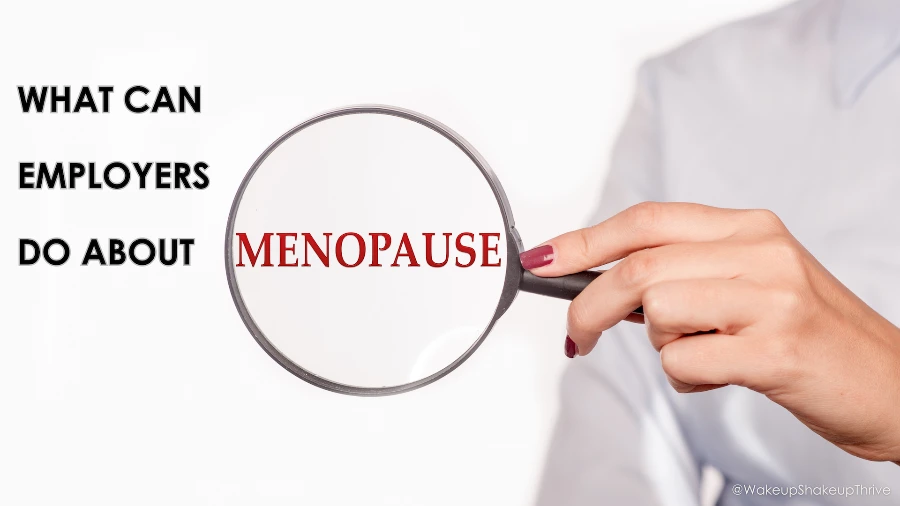
In an article by Ann Leohr for Forbes, she suggests the following:
- Educate management and employees. How much does the average male know about the physical and mental symptoms of menopause?
- Appoint an employee spokesperson to be the liaison to management so employees don’t have to speak one-on-one with management.
- Offer flexible options such as allowing the work day to begin later, work-from-home options and not delineating between sick leave and personal time off.
- Ensure benefit programs include treatments like acupuncture, Chinese medicine, bioidentical hormone replacement, and anything else that helps alleviate menopause symptoms.
When we spoke with recently retired pharmacist Anne Hays, she shared that “The employee needs to be valued and shown they are valued and appreciated. We have to recognize they have a skill, experience and at this point – an expertise. We have to see individuals as individuals and not assign characteristics of a certain age group. There is no standard behavior of mothers 50+, it’s all variable.”
With many women leaving their jobs in favor of more supportive workplaces, flexible schedules, or simply out of necessity, leaders can absolutely bring this demographic of hard-working and experienced employees back to the forefront of their attention. What’s most important: Acknowledge what isn’t working, and take steps to make real change.
Choose Your Next Steps
When we speak directly to women in the workplace aged 50+, we hear about a number of the issues – and solutions – listed above as they play out in everyday business. To set your organization apart, you need a plan for addressing these challenges and opportunities, and at Wake Up, Shake Up, Thrive!, we have your wake-up call ready to go! Reach out to reserve some time to craft your organizations Check-Up to discover where you are and plan your roadmap for the 50+ mothers – and the 4 generations they work with!
Additional interview content to bank:
Real change allows us to do what Fran did. She found her path, her sweet spot, and is living her vision and mission. Fran now works with coaching clients in their 50s who start out by saying, “It’s too late for me, or my time is over.” Fran is living proof, coaching now at 79, that it is never too late to make these shifts so you can thrive.
As Fran told us, “The key to living a life you love and doing the work you love is living true to the essence of who you are.”
It doesn’t have to be a midlife crisis, it’s more of a resent 0 a wake up call. We embrace asking for outside help today, whether its a coach or a psychologist. You cannot figure yourself out alone, Well maybe you could sit in a cave like Buddha and meditate for 50 years – but it doesn’t work like that anymore.
26:32 _ Dom or Ellen is saying, There’s a preconception that as we age we’re less flexible and adaptable but instead we’re more flexible, more adaptable and as loyal as ever. We have more knowledge, especially more self-knowledge.
When you hire more experienced workers, you do pay a premium for that but “it’s an investment in your company and the return on investment is very different. You get peace of mind. Don’t look at the money, look for the experience, the flexibility of the mind.
Question from D&E: Ideas, opinions, or advice for employers who want to hire, to be loyal, to work with women who, on top of that, are mothers?
